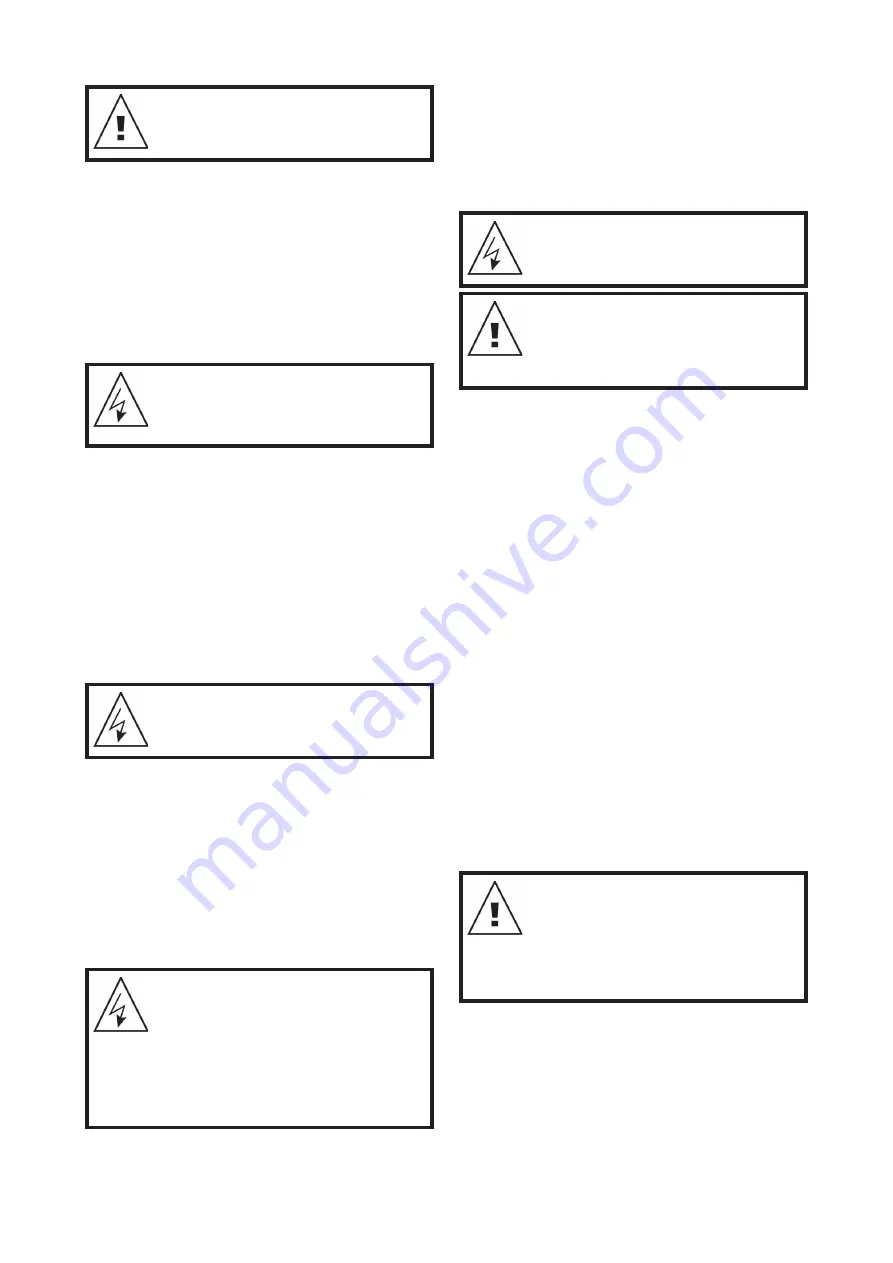
3
Ensure sealing gasket is correctly
fitted between pump and companion
flange connections.
7. Delivery Piping
Friction in the delivery increases the head on
the pump and so reduces capacity and pressure
available at the delivery point. To minimise
performance losses we recommend the use of
larger diameter pipe. For more detailed advice
concerning deliver heads and delivery piping,
please consult your local Davey Dealer.
8. Power Connection
The electrical connections and
checks must be made by a qualified
electrician and comply with
applicable local standards.
Note:
1. Ensure motor is connected to power supply
specified on nameplate.
2. Avoid long extension leads as they can cause
substantial voltage drop and
operating problems.
3. Although the electric motor is specifically
engineered to perform on a range of power
supply voltages, malfunctions or failure caused
by adverse voltage supply conditions are not
covered under guarantee.
Always ensure that the earth
conductor on the motor is
connected to a good earth.
Three Phase
Three phase models are designed for connection to
a nominal 415V (±5%) power supply, but must be
wired with a contactor with ‘quicktrip” overloads set
to suit the motor.
Davey recommend the use of overloads which
also have the ability to detect “single phasing” or
“dropped phase” conditions in the power supply.
Important Note: - Three Phase Models Only
BEFORE FINALISING WIRING
CONNECTIONS, CHECK THAT
MOTOR ROTATES IN DIRECTION
OF ARROW (CLOCKWISE
WHEN SHAFT IS VIEWED FROM
WIRING CONNECTION END). TO
ALTER ROTATION, CHANGE
ANY TWO POWER LEADS
AT MOTOR TERMINALS.
When the unit is connected and operating the
phase balance should be checked. This should be
within 5% variation. “Rolling” the leads may help
to improve a small unbalance, but major phase
unbalance will usually be attributable to an input
power unbalance. This must be addressed before
the pump is used.
POWER CONNECTIONS AND WIRING
MUST BE CARRIED OUT BY AN
AUTHORISED ELECTRICIAN.
In accordance with AS 3350.2.41 we
are obliged to inform you that this
pump is not to be used by children or
infirm persons and must not be used
as a toy by children.
9. Priming and Operation
The pump body and suction line should be filled by
pouring water into the priming plug hole adjacent to the
outlet. Screw on the priming plug, close the discharge
valve two thirds and switch pump on. Gradually open
the discharge valve as the pipeline fills.
In high suction lift conditions, the pump may make
a noise similar to it pumping sand or gravel; this
will usually be cavitation occurring. Reduce flow
until the cavitation noise stops. Once the discharge
pipeline fills you can open the valve. If the
cavitation noise returns, close the discharge valve
slightly until it stops.
In the case of installation where there is a positive
suction pressure (flooded suction) remove the
pump’s priming plug and slowly open the gate valve
in the suction piping to allow water to enter the
pump from the suction line until all air is expelled.
Replace the priming plug and fully open the gate
valve in the suction line and switch the pump on.
Prime should be established almost immediately,
however, it may be necessary to re-prime several
times on some installations before fully established
optimum pump performance.
- Do not run pump dry or allow to
run continuously in a loss of
prime condition.
- If this pump is allowed to pump
water containing sand or other
abrasive material, the effective life
of the pump will be shortened.
If pump runs but will not pump water, check for
the following:
1. Suction line and pump body not filled with water.
2. Leaking foot valve.
3. Air leaks in suction lines.
4. Air trapped in suction line (even on flooded
suction) possibly when there is an uneven rise in
the piping from water to pump (eliminate “humps
and hollows”).


























